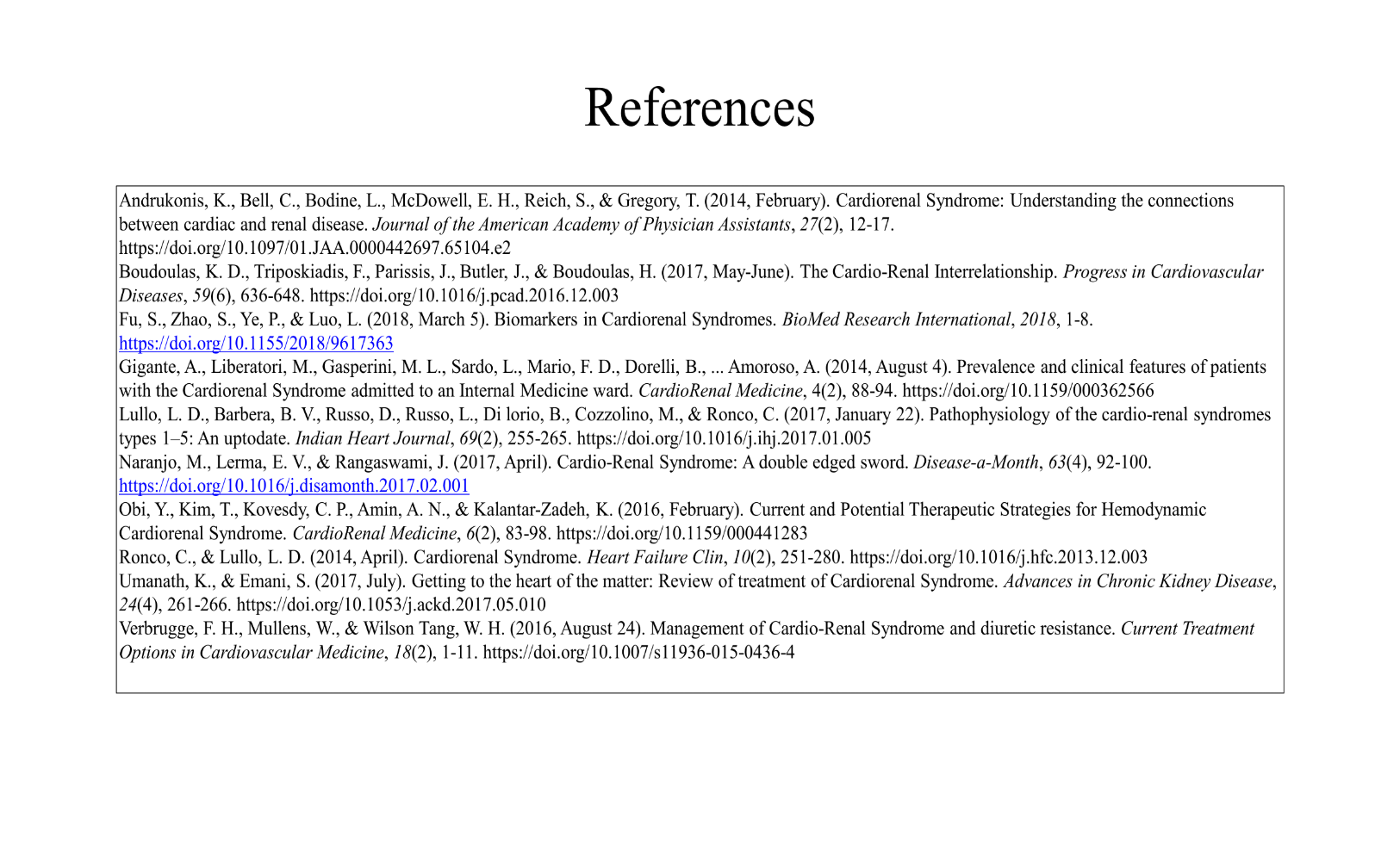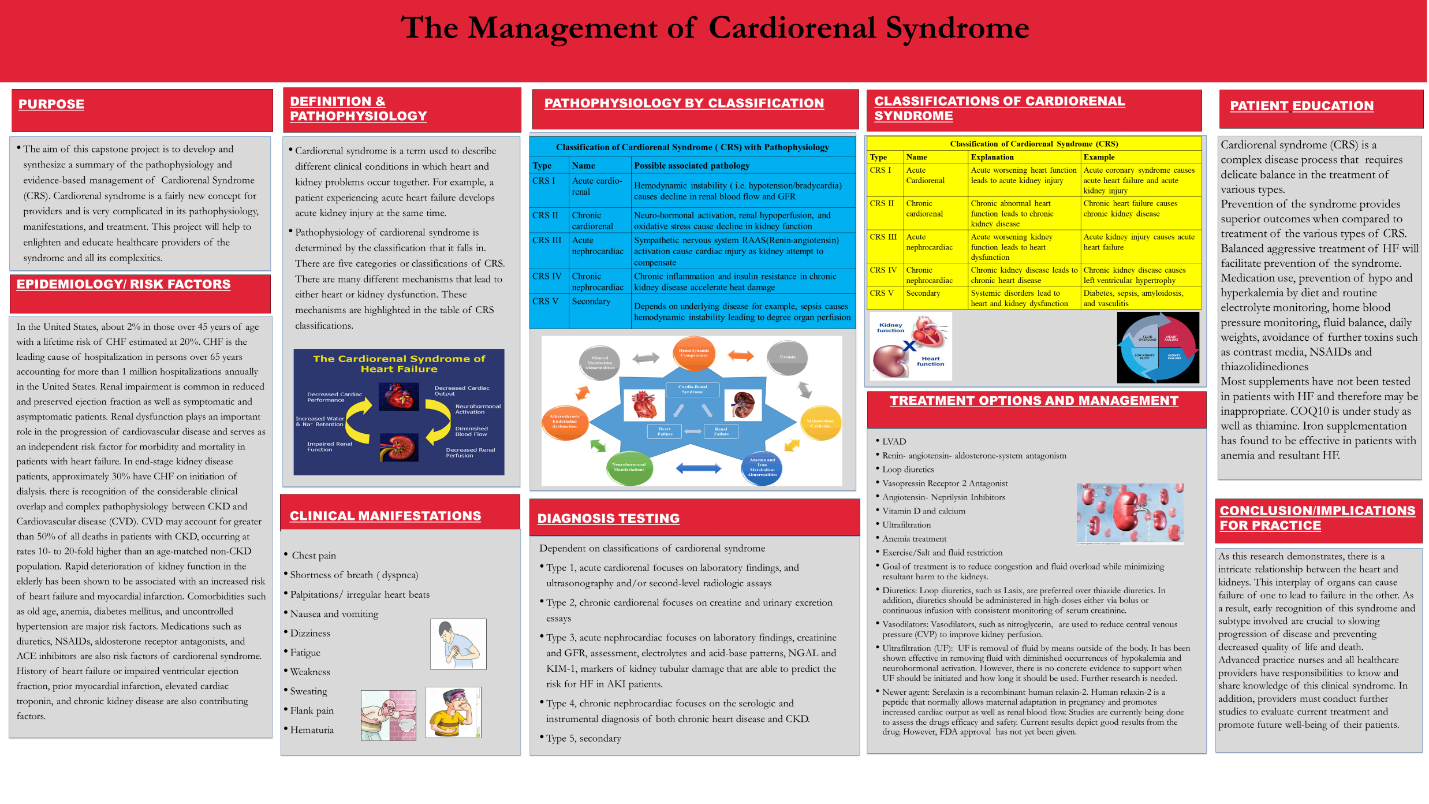Introduction
Patient education remains one of the evidence-based methods used to manage various medical conditions. Posters and campaigns are usually used by health professionals to guide and empower their respective patients. This paper gives a detailed review and analysis of the presented poster and how it can empower many people to deal with the cardiorenal syndrome (CRS).
Peer Review
After examining the poster titled “The Management of Cardiorenal Syndrome”, it is evident that the designer offers relevant information that can empower medical practitioners and patients to deal with CRS. The first outstanding observation is that the poster’s objective or purpose is clearly stated. The reader can acknowledge that the educational tool is aimed at informing people about cardiorenal syndrome (CRS) and how to manage it.
The poster’s first impression stimulated my attention. This was the case since the designer used appropriate colors, fonts, and pictorials to pass the intended message to the reader. The title is also brief and interesting. Another important thing to observe is that the intended message is complete. However, the tool fails to present the intended information with an economy of words. This means that most of the sentences could have been shortened without affecting the quality of the poster.
After going through the educational tool, I have observed that every main point or idea is presented professionally. However, the key problem is that the designer failed to offer supporting evidence. It is also notable that the information is not shortened or summarized. Consequently, small fonts are used to ensure that the words fit in the document. This is capable of confusing the intended reader.
It is important to note that there are no errors in spelling, punctuation, and grammar. Additionally, the charts and pictorial materials have been presented effectively to pass across the intended information to the reader. In terms of design, the font choice and color scheme appear to be out of place. As indicated earlier, these weaknesses make it hard for different people to go through the entire poster. The color scheme also lacks consistency, thereby discouraging many individuals from using this poster.
Despite the above minor bottlenecks, the poster’s layout and organization are commendable. This means that any conscientious reader would be in a position to get quality information from this poster. It is also evident that the presented abstract provides sufficient information regarding the tool. This is the case because it gives a detailed summary of the targeted medical condition, its causal factors, and the best strategies to manage it. The material is also worth reading because it encourages medical practitioners, nurses, and policymakers to focus on the emerging issues surrounding CRS and come up with evidence-based strategies to deal with them. Members of the community and patients can also use this tool to monitor their health conditions and seek appropriate medical support promptly.
Concluding Remarks
In conclusion, the selected poster can offer evidence-based information about CRS to health practitioners, community members, and patients. The educational tool is designed properly to achieve the intended objective. However, the color scheme, font choice, and the absence of adequate citations make it less authoritative. Despite such weaknesses, more people should be encouraged to read and use this poster to deal with the health complications associated with CRS.

